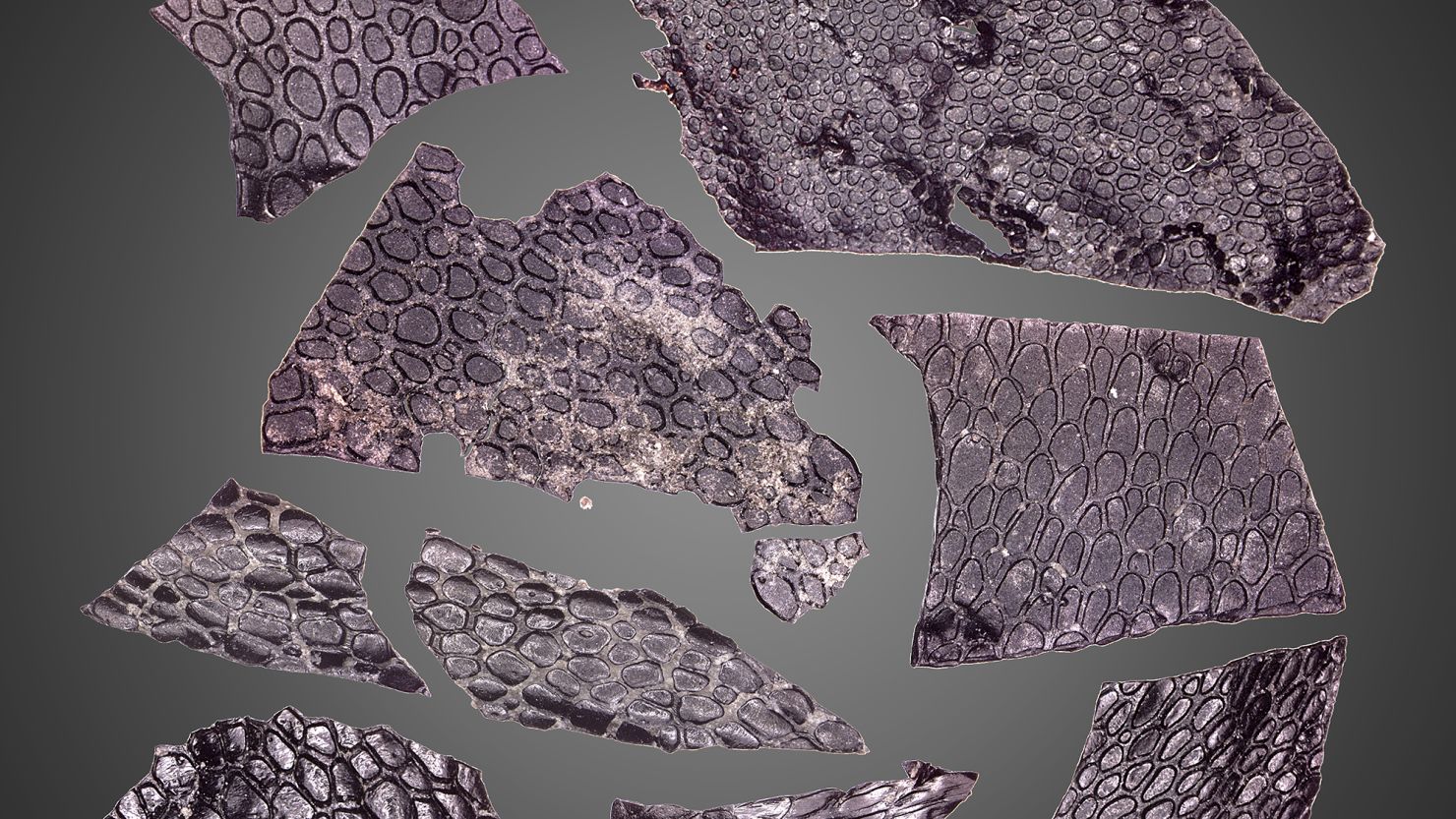The world’s oldest known fossilized skin belonged to a species of reptile that lived before dinosaurs roamed the Earth, a new study has found.
The fragment of fossilized reptile skin was found in a limestone cave in Oklahoma, United States, and is at least 130 million years older than the oldest previously known skin fossil.
Researchers from the University of Toronto Mississauga identified a skin fragment with a pebbled surface which is similar to crocodile skin, according to a press release published Thursday.
Dating from around 289 million years ago, it is the oldest known sample of a preserved epidermis, which is the outside layer of skin on terrestrial reptiles, birds and mammals. The epidermis “was an important evolutionary adaptation in the transition to life on land,” reads the release.
“Every now and then we get an exceptional opportunity to glimpse back into deep time,” said first author Ethan Mooney, a paleontology graduate student at the University of Toronto, in the release.
“These types of discoveries can really enrich our understanding and perception of these pioneering animals,” he added.
Study coauthor Robert Reisz, a biology professor at the University of Toronto Mississauga who researches vertebrate paleontology, told CNN that it’s “very rare” to find fossilized skin “despite the fact that it’s actually the largest organ in the body.”
“It decomposes very easily after the animal dies,” said Reisz, who explained that this sample was preserved due to the unique features of the Richards Spur limestone cave system, where many of the oldest examples of early terrestrial animals have been found.
“The conditions in the cave were really very unusual,” Reisz told CNN, citing the chemistry of the clay sediment, the water and the presence of hydrocarbons.
Animals that fell into the cave system would have been buried in fine clay sediments, slowing decomposition, and then interacted with hydrocarbons in oil that seeped through the site, preserving the skin. The cave was also likely an oxygenless environment, according to researchers.
The sample was one of thousands donated to the team by amateur collector Bill May in 2018, Reisz told CNN. Most of the samples were bone and easily recognizable. However, the “delicate” skin fossil was unique, measuring about a quarter of a millimeter in thickness or less.
The team found epidermal tissues during microscopic examination of the tiny skin fossil, which is smaller than a fingernail.
“We were totally shocked by what we saw because it’s completely unlike anything we would have expected,” said Mooney. “Finding such an old skin fossil is an exceptional opportunity to peer into the past and see what the skin of some of these earliest animals may have looked like.”
Lizard-like animal
Researchers say that the pebbled skin surface is similar to crocodile skin, and that hinged regions between scales are similar to those found in snakes and worm lizards.
Despite these features, it is not possible for researchers to say what animal or body region the sample came from, because the fossil is not associated with any other remains.
But Reisz told CNN that the skin would have belonged to “a small little animal looking somewhat like a lizard.”
And he believes that the skin could have belonged to a small reptile named Captorhinus, fossils of which have been found in the cave system far more commonly than any other such animal.
However, the fact that the sample shares some similarities with living reptiles shows the importance of skin for animals living on land.
“The epidermis was a critical feature for vertebrate survival on land,” said Mooney. “It’s a crucial barrier between the internal body processes and the harsh outer environment.”
In addition, the sample may be an example of a skin structure that eventually evolved into bird feathers and mammalian hair follicles, according to the release.
The study was published in the journal Current Biology.
Sign up for CNN’s Wonder Theory science newsletter.?Explore the universe with news on fascinating discoveries, scientific advancements and more.




